50 Years of Disaster Data
More disasters, injuries, and costs but fewer deaths
by Thabang Doreen Lebese, Linda Ogallo, and Marta Baraibar

© iZeno
The WMO has just released an Atlas of Mortality and Economic Losses from Weather, Climate and Water Extremes (1970–2019) assessing the impacts of disasters over the past 50 years. We decided to look at what the data looks like for our region, but first, let’s look at some of the global findings.
Climate change leads to more extreme weather, but we got better at early warning, and this saves lives.
Global Highlights
- A disaster related to a weather, climate or water hazard occurred every day on average, killing 115 people and causing US$ 202 million in losses daily.
- The number of disasters has increased 5 times, driven by climate change, more extreme weather, and improved reporting. Yet, thanks to better Early warning systems, the number of deaths has decreased by 3 times.
- There were more than 11,000 reported disasters attributed to these hazards globally, with just over 2 million deaths and US$ 3.64 trillion in losses.
- From 1970 to 2019, weather, climate and water hazards accounted for 50% of all disasters, 45% of all reported deaths and 74% of all reported economic losses.
- More than 91% of these deaths occurred in developing countries (using the United Nations Country Classification).
- Of the top 10 disasters, the hazards that led to the largest human losses during the period have been droughts (650,000 deaths), storms (577,232 deaths), floods (58,700 deaths), and extreme temperature (55,736 deaths).
According to the WMO, this is the most comprehensive review of mortality and economic losses from weather, water, and climate extremes to date.
Now, let's look at what the data looks like for Eastern Africa.
Africa Highlights
Africa accounts for 15% of climate disasters, 35% of associated deaths, and 1% of economic losses reported globally. Although disasters associated with floods were the most prevalent (60%), droughts led to the highest number of deaths, accounting for 95% of all lives lost in the region. Majority of deaths occurred during the severe droughts in Ethiopia in 1973 and 1983 (total 400 000), Mozambique in 1981 (100 000) and Sudan in 1983 (150 000).
According to WMO, in Africa, during the past 50 years, 1 695 disasters were recorded causing 731 747 deaths and costing US$ 38.5 billion.
Eastern Africa Highlights
We analyzed the data for our region and below are some of the highlights.
The 1980" was the decade that recorded the highest amount of deaths. Over 400,000 people died due to climate hazards.
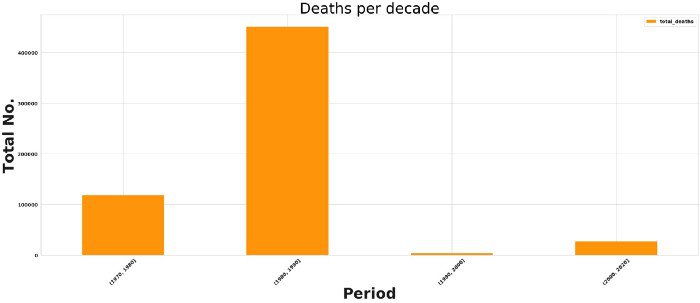
The amount of people affected by disasters is going up.
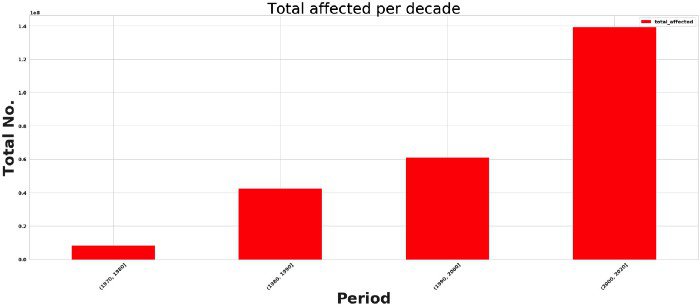
Damages caused by disasters are going up too.
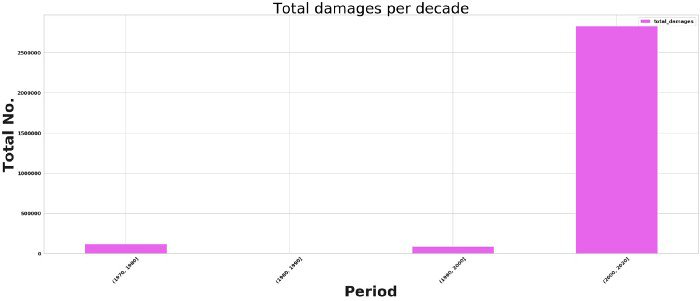
There is an upward trend in the frequency of disasters.
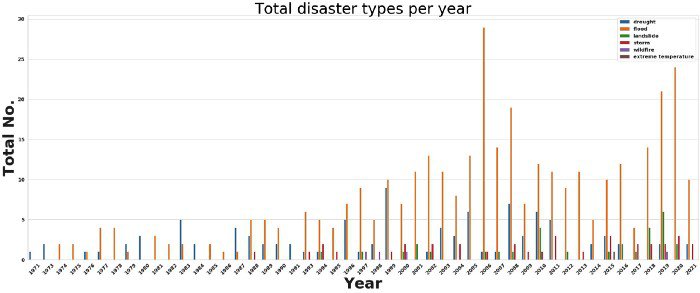
Ethiopia, Somalia, Kenya, and Tanzania recorded the highest amount of disasters.
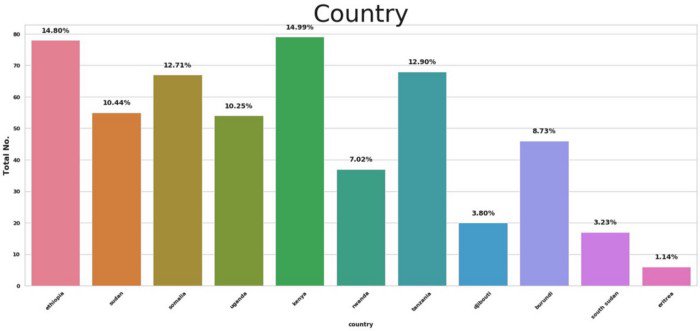
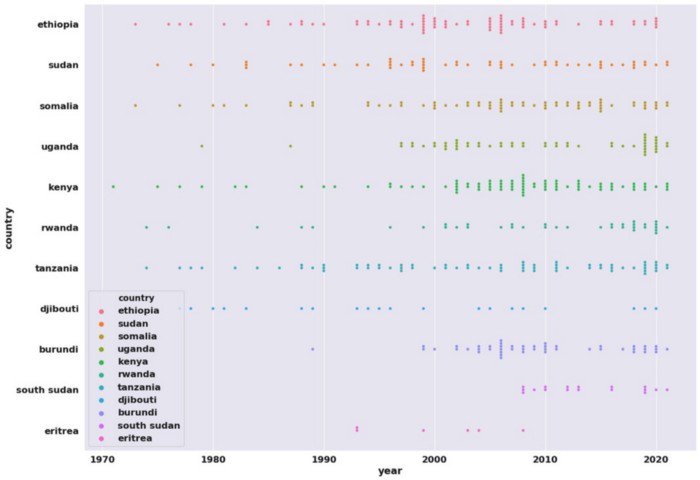
Floods are the most common disaster in our region.
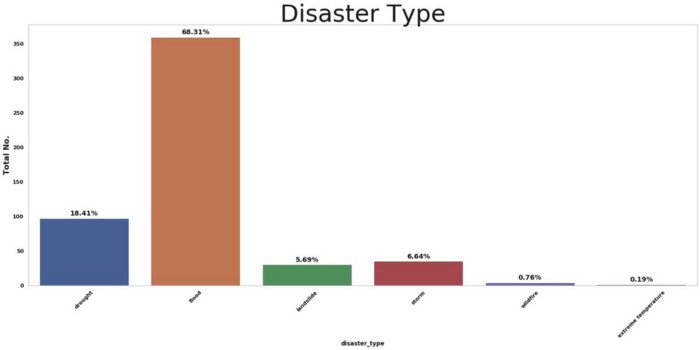
The most common are riverine floods.
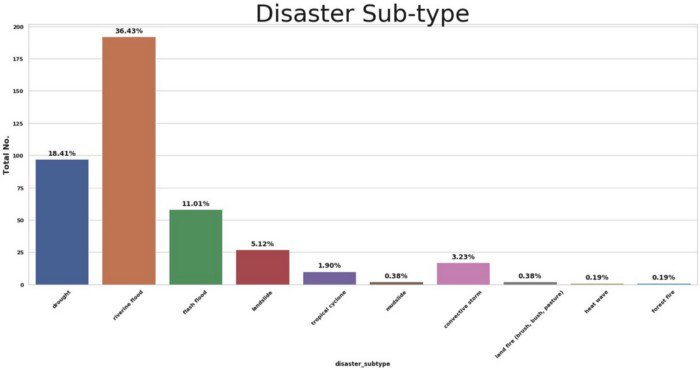
However, drought remains the most deadly disaster.
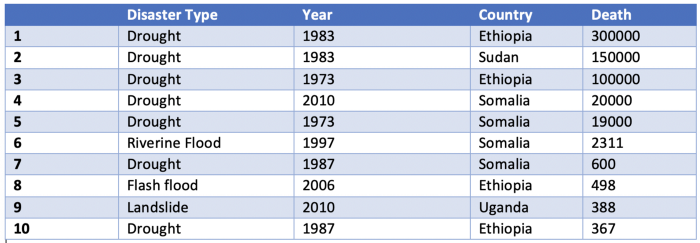
Top ten disasters in Eastern Africa from 1970–2021 based on number of deaths
Global graphs
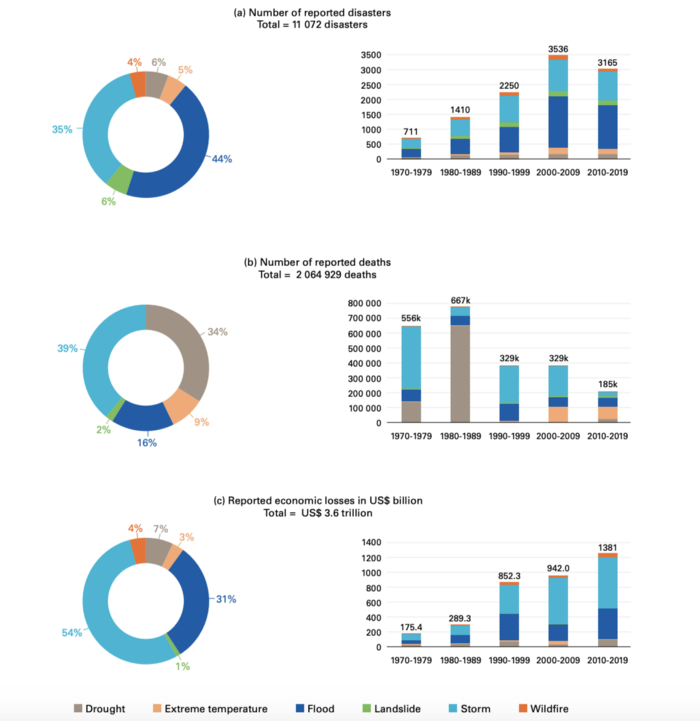
Source: WMO
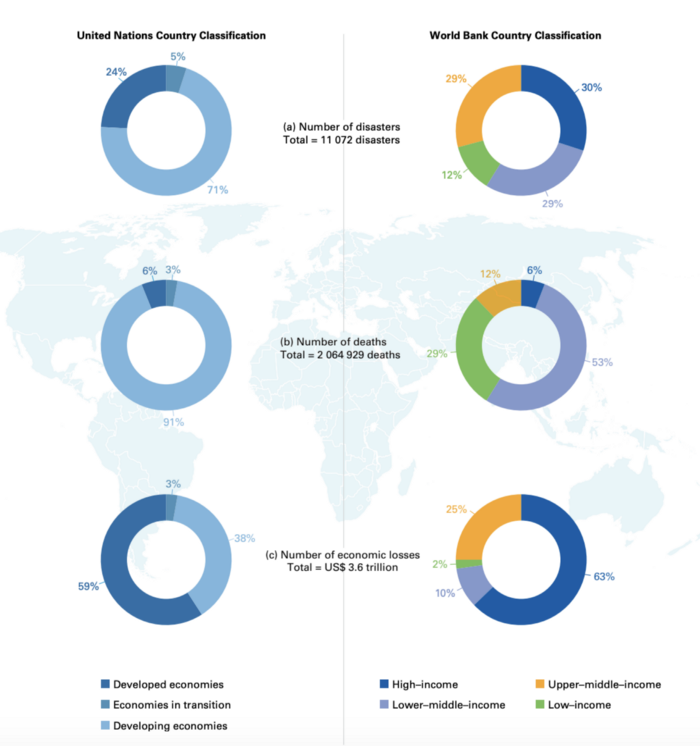
Source: WMO
Sources
WMO Atlas of Mortality and Economic Losses from Weather, Climate and Water Extremes (1970–2019)
Emergency Events Database (EM-DAT)
